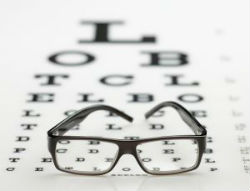
Computers and smartboards are a common staple in today’s classrooms, and now with programs such as “bring your own device” (BYOD) to school, smartphones and tablets are seeing increased use in schools as well. According to the American Optometric Association’s (AOA) 2013 American Eye-QR survey, 85 percent of parents indicate their children use an electronic device up to four hours per day.
This is no surprise as the survey also indicates 41 percent of children have their own smartphone or tablet and 32 percent use both e-books and textbooks at school. Additionally, 66 percent of children use a computer or tablet to do homework or study. With the consistent use of electronic devices throughout the day and evening, children of all ages can face a number of visual challenges.
According to the AOA, when children stare at screens for hours each day, they may visual discomfort that can interfere with their ability to focus and learn. Lengthy use of technology at school or for homework can lead to a temporary vision condition called computer vision syndrome (CVS). Symptoms of CVS include eye strain, headache, fatigue, burning or tired eyes, loss of focus, blurred vision, double vision or head and neck pain.
The AOA urges students to rest their eyes by following the 20-20-20 rule — when using technology or doing near work, take a 20 second break every 20 minutes and view something 20 feet away.
The AOA also warns that one in four children has an undiagnosed vision problem simply because they may not recognize that their eyesight isn’t optimal or is changing.
For more information on children’s vision and to find an optometrist near you, visit www.aoa.org.





